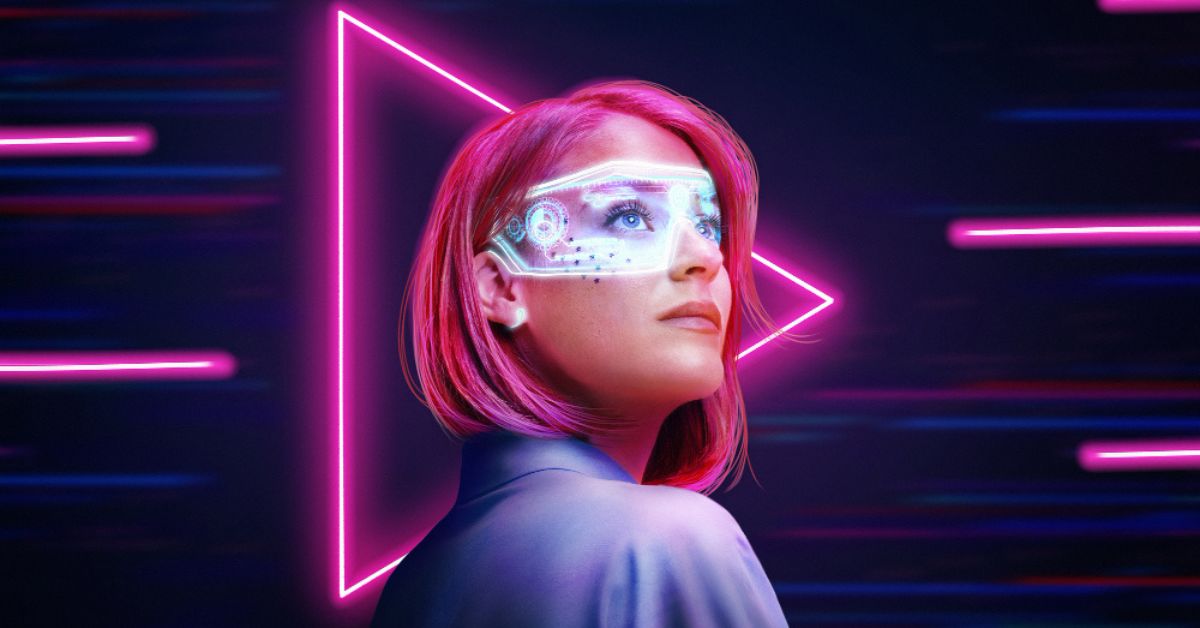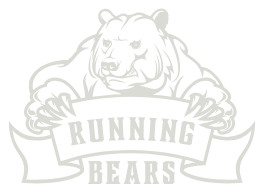Fashion
Babydollkaila: Redefining Digital Style Through Bold Self‑Expression

In the constantly shifting terrain of alt‑fashion and digital aesthetics, the emergence of Babydollkaila stands as a compelling case of how individuality grows into influence. Born from an era when self‑image is shared as freely as words, Babydollkaila has navigated creative spaces with a vision that challenges norms. This article explores the origins, style evolution, cultural impact, and community presence of Babydollkaila, probing why this rising alt‑fashion icon resonates across online scenes.
Origins and Early Influences
From early adolescence, Babydollkaila found solace in subcultures overlooked by mainstream fashion. The fascination was never simply with clothes; it lay in what could be communicated without words. With icons from goth, punk, cyber, and kawaii aesthetics serving as guideposts, Babydollkaila started experimenting with juxtaposition—tulle skirts and combat boots, pastel makeup with chain accessories, delicate lace with leather harnesses. These combinations subverted expectation, and they introduced a voice that demanded to be seen.
Family background and locale also shaped the trajectory. In places where conformity felt more comfortable, the impulse to stand out acquired urgency. Digital tools—photo editors, social platforms, streaming software—became vehicles to manifest vision. Without access to designer brands, creativity pressed on the materials at hand—thrifted garments, DIY accessories, handmade dye jobs. Babydollkaila’s style emerged through resourcefulness.
Style Elements and Visual Signature
The aesthetic portfolio of Babydollkaila comprises key recurring elements. Color selection often pivots between stark contrast and harmonious balance: jet blacks, deep purples, chrome silvers, contrasted with candy pinks, mint greens, baby blue pastels. Texture is essential: pleats, frills, fishnets, mesh, latex, vinyl. Makeup tends toward sculpted contours, dramatic eyeliner, glitter accents, and lip colors that range from near‑neon to muted dark tones. Hair is either heavily styled—extensions, pastel dyes, sharp cuts—or left raw, unprocessed, embracing natural curls or strands.
Garment silhouettes often mix softness and rigidity. Oversized sweaters may pair with waist‑cinching corsets; flowing skirts with spiked chokers; sheer panels with opaque layers. Jewelry and metallic hardware punctuate each look—safety pins, spikes, chains, padlocks—symbols borrowed from subgenres like punk and industrial. Footwear choices oscillate between platform boots, monster sneakers, Mary Janes, and even combat or creeper styles redefining “mash‑up” in fashion.
The presence of duality, contrast, intentional discord, is as central as the individual pieces. Babydollkaila’s visual signature has coherence not in uniformity but in the tension between softness and harshness, innocence and edge.
Table: Key Style Components Compared
| Component | Frequent Usage | Symbolic Meaning |
|---|---|---|
| Color Palette | Dark shades + pastels | Conflict between conformity and playful identity |
| Textures | Lace, mesh, leather | Tension, layering of experiences |
| Silhouettes | Oversized + form‑fitting | Statement on duality, body autonomy |
| Makeup | Dramatic eye, glitter | Visibility, crafting persona |
| Accessories | Chains, spikes, padlocks | Resistance, boundaries, aesthetic carving |
| DIY / Upcycled | Thrifting, modifications | Rejecting fast fashion, personal narrative |
Digital Presence and Innovation
What sets Babydollkaila apart is not only how style is embodied but how it is shared and grown. Social media platforms serve as the gallery, photography studio, and rehearsal space all at once. By posting stylized visuals, lookbooks, and behind‑the‑scenes content, Babydollkaila invites followers into processes of creation: color selection, sewing or altering garments, setting up lighting, experimenting with angles. These glimpses demystify artistic practice.
Digital art and photo editing also play key roles. Filters are used with intention—sometimes to obscure, sometimes to amplify textures and colors. Video content often incorporates motion: fabrics swirling, pieces catching light, hair moving. Soundtrack choices tend to complement mood—ethereal synths, industrial beats, alternative indie—supporting the visual narrative without overpowering it.
Online collaborations emerge too. Partnering with photographers, makeup artists, other stylists, or digital creators, Babydollkaila blurs the boundaries between model, muse, and creative director. This hybridity reinforces the idea that style is communal, a dialogue rather than a monologue.
Themes Underlying the Aesthetic
Several recurring themes illuminate what the style isn’t just about looking a certain way but what it means.
Identity and Transformation. Wardrobe becomes metamorphosis. Change isn’t surface‑level; it is identity crafting. Through hair, skin, makeup, posture, mood, Babydollkaila adapts, becomes, refuses, and reinvents.
Rebellion and Agency. The style resists neat categorization. It refuses to fit into mainstream categories easily marketed. By mixing aesthetics that are traditionally marginalized—gothic, cyber, kawaii, punk—the presence asserts agency over what “fashionable” should mean.
Vulnerability and Strength. There’s tenderness in pastels, lace, softness; hardness in spikes, leather, daring silhouettes. Together, they speak of inner complexity: softness need not be weakness; toughness does not erase vulnerability.
Cultural Impact
The reach of Babydollkaila penetrates threads beyond style. For young people seeking belonging, the persona demonstrates that difference is a source of power. For those who feel unseen, watching someone transform discomfort into artistry becomes a blueprint.
In conversations about gender and identity, this alt‑fashion icon offers nonbinary readings. The aesthetic fluidity sidesteps binary norms: wearing makeup without apology, choosing silhouettes without regard for gendered expectation, accessorizing beyond normative definitions. The result is a cultural ripple that influences peers, encourages inclusive dialogue, and shifts the mainstream’s lens.
In digital art spaces, Babydollkaila inspires others to remix, reinterpret, and imitate—and that is part of the influence. Memes, fan art, look challenges all draw from the vocabulary created. Designers, small brands, online boutiques increasingly take cues from the color combos, hardware details, and contrasts visible in the style.
Challenges and Criticisms
Rising visibility brings complexity. One challenge is balancing authenticity with platform expectations. As aesthetics gain followers, there is pressure to continue escalating intensity—more daring edits, bolder lights, more extreme styling—which can cause fatigue or detach style from original intention.
Another is commodification. When alt‑fashion becomes trendy, parts of it are absorbed by mass market in diluted form. Some critics argue that this risks stripping the rebellious roots out. Observers question whether what remains is style for commerce rather than style for expression.
A further tension involves accessibility. Not everyone has access to quality photography gear, certain fabrics, or the bandwidth for consistent content creation. These resource disparities mean that many aspiring creators may admire but struggle to replicate or sustain similar levels of visibility.
Growth and Future Directions
Looking ahead, the evolution of Babydollkaila suggests continued invention. Potential directions include:
- Cross‑medium work: venturing into music, performance art, virtual reality installations, or wearable tech. Strengthening identity not just through clothing but immersive experience.
- Community building: fostering spaces—online forums, physical meetups, virtual workshops—where style is taught, shared, and collaborated on, not simply consumed.
- Sustainability: deepening commitment to upcycling, ethical sourcing, and slow fashion, positioning eco‑conscious practice as part of alt‑fashion identity rather than as afterthought.
- Representation: using voice beyond visual style—discussions about body image, mental health, identity, inclusion—frames aesthetic expression as tied to lived experience, not just optics.
Comparative Positioning
To understand the significance of Babydollkaila, it helps to compare with other alt‑fashion figures. Some focus mainly on goth or punk tropes; others specialize in cosplay or fantasy aesthetics. What distinguishes Babydollkaila is the intersection: the refusal to be limited by a single genre, the blend of softness and harshness; the balance of handmade DIY elements with polished digital presentation. Where many peers lean into nostalgia or specific references, Babydollkaila crafts originality out of combination—less homage, more hybrid.
Audience and Reception
The following table illustrates who connects with Babydollkaila’s work, and why certain groups respond strongly.
| Audience Segment | What Attracts Them | Outcomes of the Connection |
|---|---|---|
| Young creators with limited means | Inspiration from DIY, thrifted pieces, accessible styling ideas | Empowerment to create, increased experimentation |
| Followers of alt subcultures | Shared aesthetics; recognition of hard edges, self‑expression | Community feeling; validation of outsider identity |
| Digital art and cosplay fans | Visually bold content; love for transformation and costume | Art sharing; cosplay crossover; fan remixes |
| Advocates for identity & equality | Non‑conforming presentation; challenge to gendered norms | Resonant narratives; mental health visibility |
Reactions are rarely uniform. Some embrace the boldness; others critique it. Some are confused by the mixing of styles; others celebrate the uncertainty. But that range of reaction underscores the cultural weight of a style that refuses to stay inside any box.
The Role of Photography and Editing
Visual documentation is more than record‑keeping. For Babydollkaila, photography is sculpting of light and shadow. Settings are often chosen for texture: rusted metal, cracked pavement, overgrown flora, neon lights. Lighting choices—sharp contrasts, neon glow, harsh side‑light, filtered haze—pull focus not only to wardrobe but to mood, atmosphere.
Editing reveals ideology. Overlays, glitch effects, saturation shifts, color blocking—all of these tools are used to heighten emotional tone. Sometimes the editing emphasizes rawness, allowing grain and imperfections to show; at other times, clarity and polish dominate. That oscillation reflects the dual nature of the persona.
Personal Narrative and Emotional Substance
Beyond fashion and visuals, what underlies Babydollkaila’s influence is story. The story of feeling “other,” of finding refuge in texture and color, of assembling identity piece by piece. The emotional texture is as vivid as the physical style. It includes moments of doubt, of longing for acceptance, of grappling with boundaries—between self and society, between public persona and inner world.
Followers report that the honesty implicit in those moments gives permission for their own expression. The vulnerability shines through not as exhibitionism but as shared humanity.
Broader Implications for Alt‑Fashion
The rise of Babydollkaila signals shifts in how alt‑fashion operates in digital age. One, that fusion is becoming default. Creators feel less pressure to align strictly with goth or punk or kawaii; hybridization is normative. Two, that digital tools—photo filters, video streaming, editing suites—are integral, not optional. Expression does not start with clothing alone but with how images are composed and shared. Three, that authenticity matters. Audiences increasingly value originality: seeing the process, seeing mistakes, seeing the person behind the artistry.
Gender expression, race, body diversity, mental health concerns are all being intertwined with aesthetic expression in a way that earlier alt‑fashion had often sidelined. With Babydollkaila, those intersections are present—not as accessory but as central to what the art is communicating.
Conclusion
Babydollkaila represents more than a trend. In reshaping digital style through bold self‑expression, this figure acts as both mirror and lamp: reflecting what many already feel, and lighting paths that others have yet to see. Style becomes language; aesthetic becomes identity; every outfit, photo, edit becomes part of an ongoing conversation about what it means to be seen, to resist, to transform. The trajectory of Babydollkaila suggests that alt‑fashion’s future will not retreat into nostalgia or constraint, but instead generate ever‑richer combinations of color, texture, emotion, and voice.
